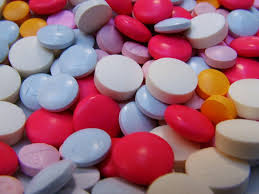Symptom Finder - Hiccoughs
HICCOUGHS
A list of causes of this common symptom is best developed by considering the anatomy of the structures associated with the phrenic nerve at its origin, along its pathway, and at its termination. Applying the mnemonic MINT to these structures allows one to arrive at a fairly complete list of possibilities.
Origin: Impulses transmitted along the phrenic nerve originate in the brainstem and spinal cord, so diseases of these structures must be considered.
M—Malformations to be considered are hydrocephalus and kernicterus.
I—Inflammatory and intoxicating conditions that are possible causes are encephalitis, toxic encephalopathy (e.g., alcohol, bromides, drugs, and uremia), and, in the spinal cord particularly, tabes dorsalis. Meningitis may be associated with persistent hiccoughs. Epidemic hiccoughs are probably a form of encephalitis.
N—Neoplasms of the brain may cause hiccoughs, especially when they are associated with increased intracranial pressure.
T—Traumatic lesions include concussions and hematomas. Supratentorial conditions (such as neurosis) may be associated with hiccoughs, but this is present only during the waking hours and the patient eats surprisingly well.
Pathway: Along the pathway of the phrenic nerve, mediastinal and chest conditions are important.
M—Malformations such as aortic aneurysm, dermoid cyst, and enlarged heart from whatever cause should be considered.
I—Inflammatory lesions such as pericarditis, mediastinitis, pneumonia, and pleurisy are equally important.
N—Neoplasm here, particularly Hodgkin lymphoma and bronchogenic carcinoma, may cause hiccoughs.
T—Trauma, particularly penetrating wounds of the chest causing pneumothorax and hemopneumothorax, is often associated with hiccoughs.
Termination: The most common causes of hiccoughs are found in the diaphragm.
M—Malformations include hiatal hernia, pyloric obstruction, and Barrett esophagitis.
I—Inflammation suggests reflux or bile esophagitis, gastritis, hepatitis, cholecystitis, peritonitis, and subphrenic abscess.
N—Neoplasms include esophageal carcinoma, carcinoma of the stomach, retroperitoneal Hodgkin lymphoma, and sarcoma.
T—Trauma includes hemoperitoneum from ruptured spleen or liver, ruptured viscus, or ruptured ectopic pregnancy. One other group of causes is the reflex stimulation of the phrenic nerve from organs far beneath the diaphragm. For example, carcinoma of the uterus or colon without metastasis may occasionally cause hiccoughs.
Approach to the Diagnosis
The usual reaction to a patient with hiccoughs is “They’ll get over them regardless of what we do so why worry about them?” If, however, one puts oneself in the position of the patient, it behooves one to be certain that a grave condition such as uremia or subdiaphragmatic abscess is not present.
Relief with Pepto-Bismol or Xylocaine viscus suggests the cause is reflux esophagitis. In the otherwise healthy patient, esophagoscopy and gastroscopy often reveal a reflux esophagitis or gastritis. Cholecystograms, liver and pancreatic function studies, spinal tap, and brain and total body scan have their place in individual cases.
Other Useful Tests
1. CBC (anemia, chronic infection)
2. Chemistry panel (uremia, cirrhosis)
3. Esophagram (reflux esophagitis)
4. Upper GI series (gastritis, gastric ulcer)
5. Gallbladder ultrasound (cholelithiasis)
6. CT scan of the abdomen (e.g., subdiaphragmatic abscess)
7. ECG (pericarditis)
8. Bernstein test (reflux esophagitis)
9. Ambulatory pH monitoring (reflux esophagitis)
A list of causes of this common symptom is best developed by considering the anatomy of the structures associated with the phrenic nerve at its origin, along its pathway, and at its termination. Applying the mnemonic MINT to these structures allows one to arrive at a fairly complete list of possibilities.
Origin: Impulses transmitted along the phrenic nerve originate in the brainstem and spinal cord, so diseases of these structures must be considered.
M—Malformations to be considered are hydrocephalus and kernicterus.
I—Inflammatory and intoxicating conditions that are possible causes are encephalitis, toxic encephalopathy (e.g., alcohol, bromides, drugs, and uremia), and, in the spinal cord particularly, tabes dorsalis. Meningitis may be associated with persistent hiccoughs. Epidemic hiccoughs are probably a form of encephalitis.
N—Neoplasms of the brain may cause hiccoughs, especially when they are associated with increased intracranial pressure.
T—Traumatic lesions include concussions and hematomas. Supratentorial conditions (such as neurosis) may be associated with hiccoughs, but this is present only during the waking hours and the patient eats surprisingly well.
Pathway: Along the pathway of the phrenic nerve, mediastinal and chest conditions are important.
M—Malformations such as aortic aneurysm, dermoid cyst, and enlarged heart from whatever cause should be considered.
I—Inflammatory lesions such as pericarditis, mediastinitis, pneumonia, and pleurisy are equally important.
N—Neoplasm here, particularly Hodgkin lymphoma and bronchogenic carcinoma, may cause hiccoughs.
T—Trauma, particularly penetrating wounds of the chest causing pneumothorax and hemopneumothorax, is often associated with hiccoughs.
Termination: The most common causes of hiccoughs are found in the diaphragm.
M—Malformations include hiatal hernia, pyloric obstruction, and Barrett esophagitis.
I—Inflammation suggests reflux or bile esophagitis, gastritis, hepatitis, cholecystitis, peritonitis, and subphrenic abscess.
N—Neoplasms include esophageal carcinoma, carcinoma of the stomach, retroperitoneal Hodgkin lymphoma, and sarcoma.
T—Trauma includes hemoperitoneum from ruptured spleen or liver, ruptured viscus, or ruptured ectopic pregnancy. One other group of causes is the reflex stimulation of the phrenic nerve from organs far beneath the diaphragm. For example, carcinoma of the uterus or colon without metastasis may occasionally cause hiccoughs.
Approach to the Diagnosis
The usual reaction to a patient with hiccoughs is “They’ll get over them regardless of what we do so why worry about them?” If, however, one puts oneself in the position of the patient, it behooves one to be certain that a grave condition such as uremia or subdiaphragmatic abscess is not present.
Relief with Pepto-Bismol or Xylocaine viscus suggests the cause is reflux esophagitis. In the otherwise healthy patient, esophagoscopy and gastroscopy often reveal a reflux esophagitis or gastritis. Cholecystograms, liver and pancreatic function studies, spinal tap, and brain and total body scan have their place in individual cases.
Other Useful Tests
1. CBC (anemia, chronic infection)
2. Chemistry panel (uremia, cirrhosis)
3. Esophagram (reflux esophagitis)
4. Upper GI series (gastritis, gastric ulcer)
5. Gallbladder ultrasound (cholelithiasis)
6. CT scan of the abdomen (e.g., subdiaphragmatic abscess)
7. ECG (pericarditis)
8. Bernstein test (reflux esophagitis)
9. Ambulatory pH monitoring (reflux esophagitis)

